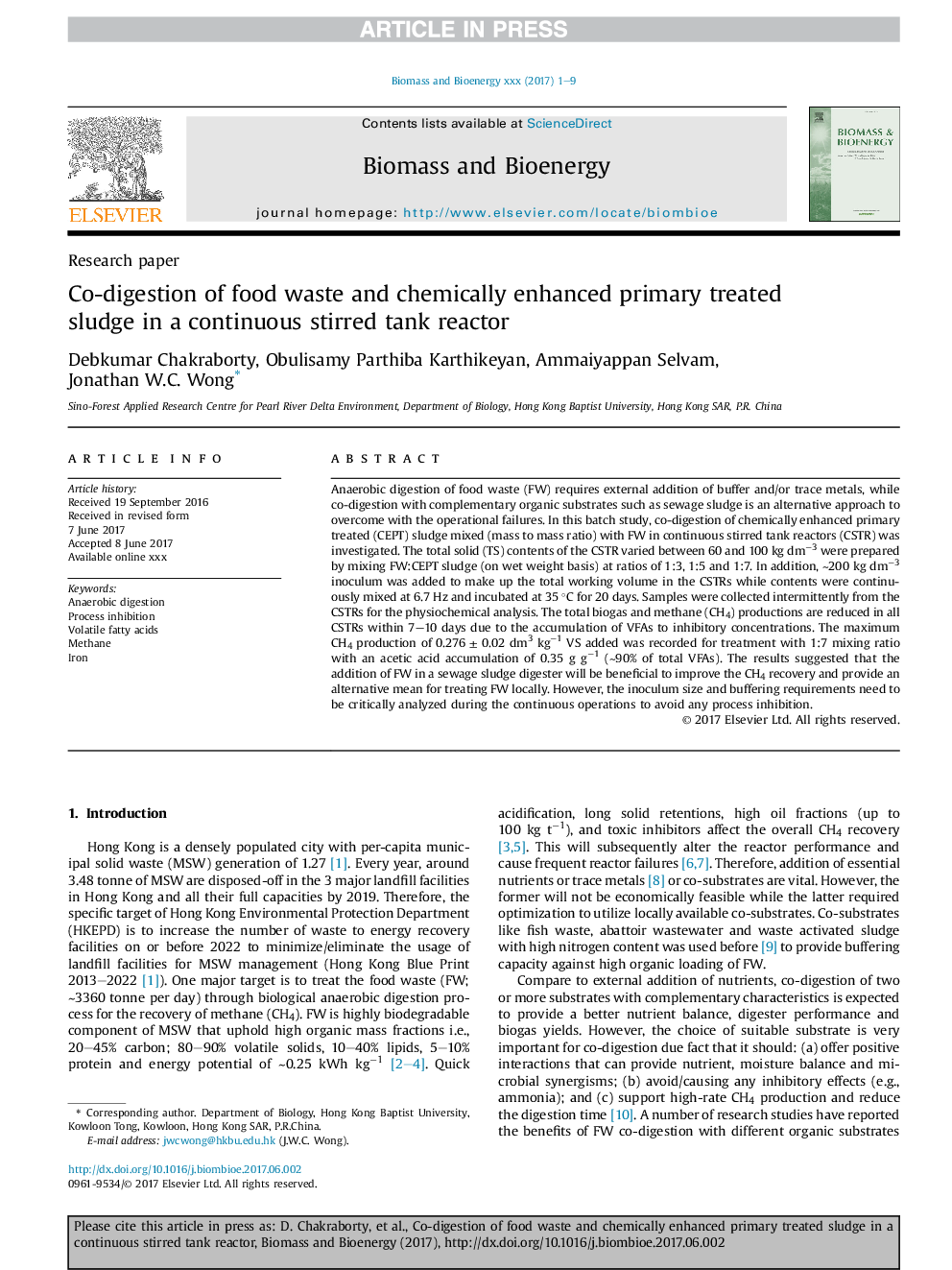| Article ID | Journal | Published Year | Pages | File Type |
|---|---|---|---|---|
| 7062968 | Biomass and Bioenergy | 2018 | 9 Pages |
Abstract
Anaerobic digestion of food waste (FW) requires external addition of buffer and/or trace metals, while co-digestion with complementary organic substrates such as sewage sludge is an alternative approach to overcome with the operational failures. In this batch study, co-digestion of chemically enhanced primary treated (CEPT) sludge mixed (mass to mass ratio) with FW in continuous stirred tank reactors (CSTR) was investigated. The total solid (TS) contents of the CSTR varied between 60 and 100 kg dmâ3 were prepared by mixing FW:CEPT sludge (on wet weight basis) at ratios of 1:3, 1:5 and 1:7. In addition, â¼200 kg dmâ3 inoculum was added to make up the total working volume in the CSTRs while contents were continuously mixed at 6.7 Hz and incubated at 35 °C for 20 days. Samples were collected intermittently from the CSTRs for the physiochemical analysis. The total biogas and methane (CH4) productions are reduced in all CSTRs within 7-10 days due to the accumulation of VFAs to inhibitory concentrations. The maximum CH4 production of 0.276 ± 0.02 dm3 kgâ1 VS added was recorded for treatment with 1:7 mixing ratio with an acetic acid accumulation of 0.35 g gâ1 (â¼90% of total VFAs). The results suggested that the addition of FW in a sewage sludge digester will be beneficial to improve the CH4 recovery and provide an alternative mean for treating FW locally. However, the inoculum size and buffering requirements need to be critically analyzed during the continuous operations to avoid any process inhibition.
Related Topics
Physical Sciences and Engineering
Chemical Engineering
Process Chemistry and Technology
Authors
Debkumar Chakraborty, Obulisamy Parthiba Karthikeyan, Ammaiyappan Selvam, Jonathan W.C. Wong,
